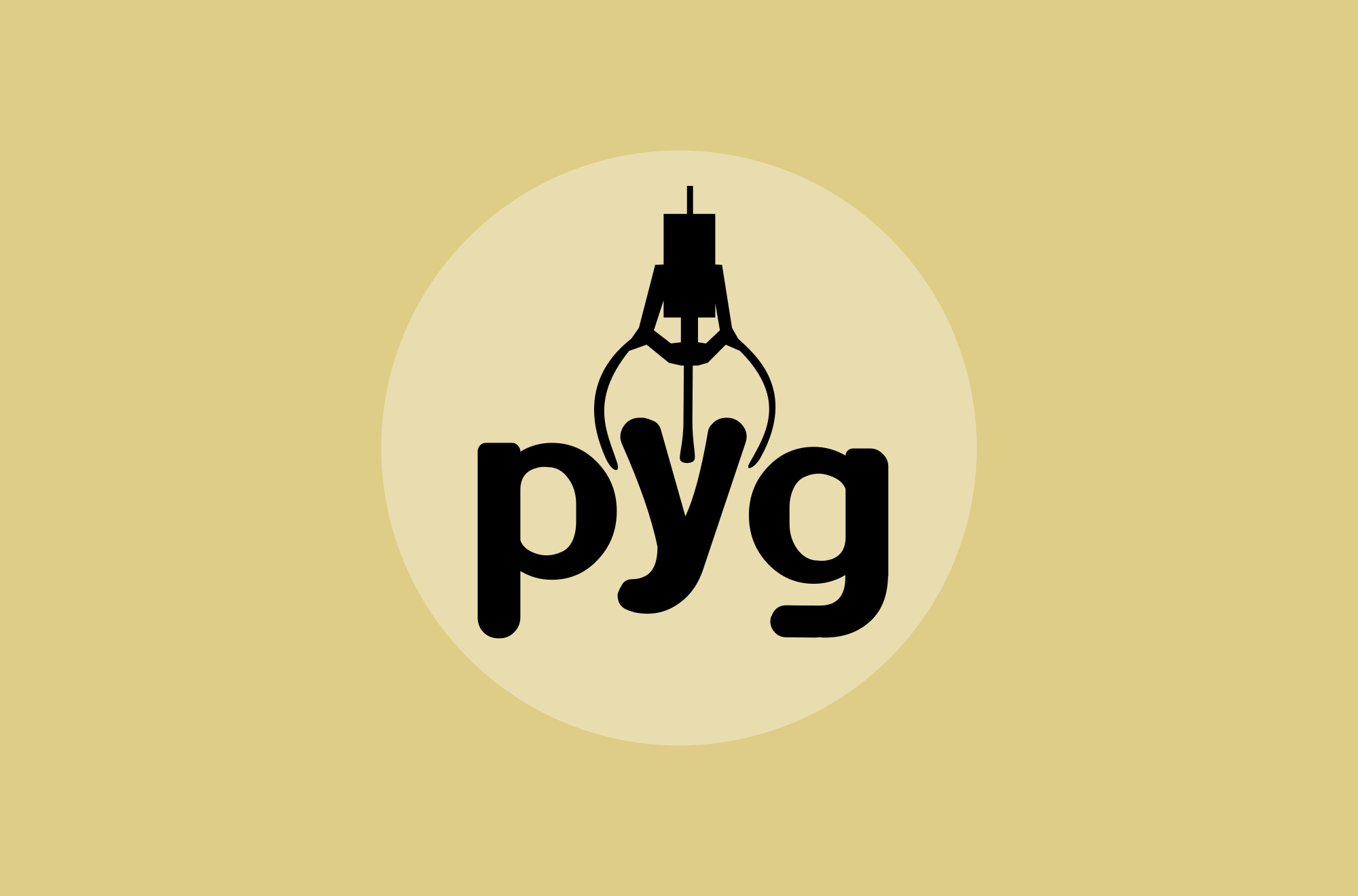pyg is a wrapper around the Youtube-API, and allows easy retrieval and analysis of specific data.
You need a working Youtube-API key in order to use this program. See the Google Developers Portal for more information on how to create one.
- Fetch Youtube data (metadata for videos, playlists, comments and captions) for channels as well as for collections of videos
- Export data to Elasticsearch (videos and comments)
- Build networks of recommended videos
- Saves networks as .graphml files (can be imported into Gephi)
- Python >3.5
- a Youtube API v3 key
- a running Elasticsearch instance optional
Clone this repository and install it (preferably into a virtualenv):
$ git clone https://github.com/diggr/pyg
$ cd pyg
$ pip install .Create a project folder and initialize project there:
$ mkdir pygproject
$ cd pygproject
$ pyg init
The last command creates template files for the project configuration (config.yml), fetch items (channels.yml, videos.yml) and networks (network.yml).
Before you can start, you will need to add some information to the config.yml. Enter your Youtube API and credentials for your elasticsearch server key into the config.yml in order to proceed (the latter can be left blank if you don't intend to export to ES.
elasticsearch:
prefix: pyg_ # default elasticsearch prefix
url: '' # url for elasticsearch server
network:
proxy: '' # if you use a proxy server, add it here
project:
dir: data # you might change the data directory (or not)
name: pyg_project # change to your project name
youtube:
api-key: '' # add your YouTube API key here, otherwise nothing will workThe main configuration file (contentwise) is the channels.yml file in the root directory. It contains a list of all channel identifiers to be fetched.
Note: The channels can be grouped, to allow for a granular retrieval and update process.
main_group:
- channel/UCdQHEqTxcFzjFCrq0o4V7dg
- channel/UCI06ztiuPl-F9cSXsejMV8A
other_group:
- channel/UCZzPA6tCoQAZNiddpE-xA_QAfter filling in your preferred chanels, run the fetch command to fetch the data using the Youtube API:
$ pyg fetch channelsIf you are interested in only a specific group, you can give it a argument:
$ pyg fetch channels other_group
The channels will be fetched and saved into the projects data folder (which is specified in the previously configured config.yml) Each groups contents will be stored in a separate folder, and each channel in a separate zip archive (See e.g. olf42/zip_archive for a small zip file wrapper in Python).
Additonally provenance information is recorded an stored next to the zip files. The provenance information is stored in JSON-LD using the W3C PROV-O ontology. See diggr/provit for more information about recording, reading and processing provenance information.
It is also possible to just get single videos in a similar way. Add the videos IDs to your videos.yml:
my_video_list:
- 5IsSpAOD6K8
- qFLw26BjDZsand use the fetch videos command:
$ pyg fetch videos or for a specific group:
$ pyg fetch videos my_video_listYou can search youtube an get a result list, which is ready to be pasted into the videos.yml file.
$ pyg search diggr --results 50The --results flag sets the number of results (max: 50, default: 10).
The video and channel data can be exported to an elasticsearch instance to ease further processing and investigation of the fetched data. The export command will build a separate index for each data type (video related data and comment related data). If not specified otherwise, it will use the prefix defind in the config.yaml
The following command will build two indices: pyg_videos pyg_comments
$ pyg elasticsearch channelsThe following command build two indices: my_prefix_videos my_prefix_comments
$ pyg elasticsearch channels other\_group my\_prefix
CAUTION: If an index already exists, it will be overwritten!
You can use the integrated update function to fetch new comments, videos and channels:
$ pyg update channelsThe update script checks for each video in the channel if the comment count changed. If so, the current video data will be fetched from the Youtube API. New videos will also fetched.
An update-file for each channel in the form of <channel_name>_.zip will be created in the data folder.
Add your network configuration to the network.yml:
darksouls:
type: 'videos'
q: 'dark souls'
depth: 2By using the network command, you can create a graphml file, which can be used in Gephi or similar tools to be investigated.
$ pyg network darksoulsList proxy in config.yml
network:
proxy: 123.4.5.6:7890You are required to give the --proxy option in order to use the given proxy.
$ pyg --proxy network darksouls
pyg
--proxy/--no-proxy (default: no-proxy)
init
fetch
channels
<group name>
--comments/--no-comments (default: comments)
--captions/--no-captions (default: captions)
videos
<group name>
--comments/--no-comments (default: comments)
--captions/--no-captions (default: captions)
update
channels
<group name>
network
<network name>
--api/--no-api (default: api)
analysis
user-stats
channel-stats
elasticsearch
channels
<group name>
<index prefix>
videos
<group name>
<index prefix>- 2019, Universitätsbibliothek Leipzig info@ub.uni-leipzig.de
- P. Mühleder muehleder@ub.uni-leipzig.de
- F. Rämisch raemisch@ub.uni-leipzig.de
- GNU General Public License v3 (Software)
- CC-BY (Assets)

